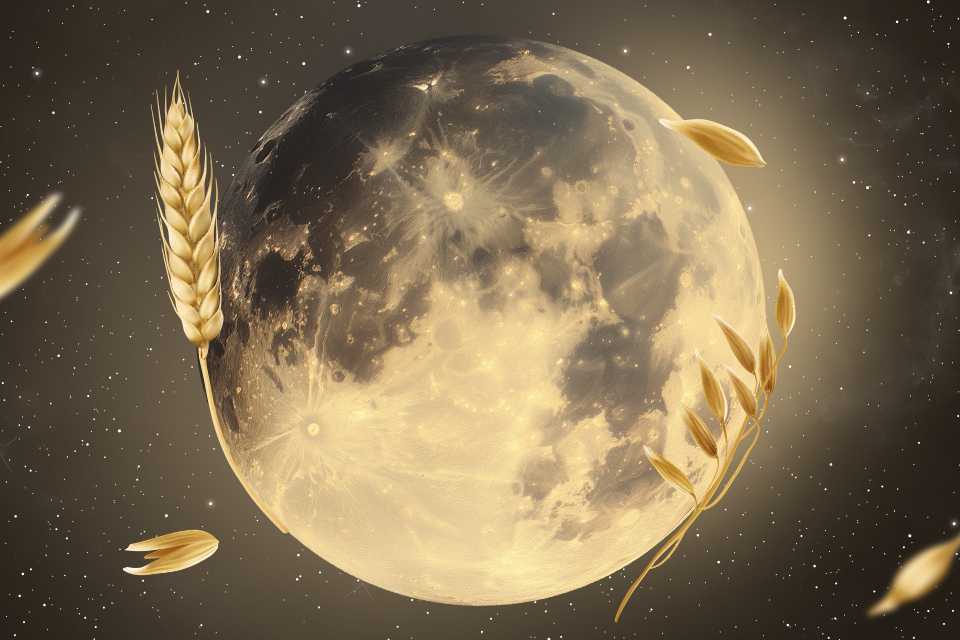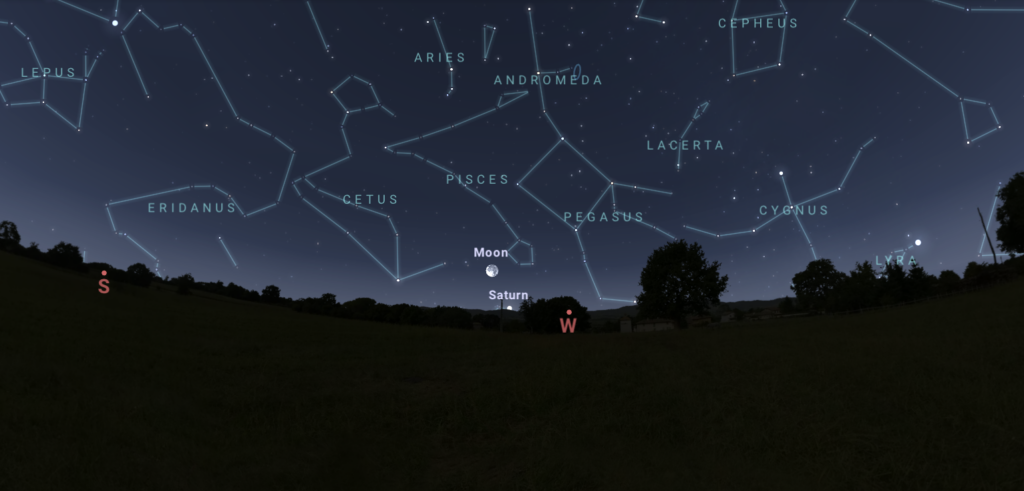The next full moon, traditionally known as the Harvest Moon, will occur on the night of September 17-18. Except this time, two remarkable events will align: a supermoon and a partial lunar eclipse.

Why the September full moon is called the Harvest Moon
The next full moon will appear on the night of September 17-18. This full moon is traditionally known as the Harvest Moon, a fitting name as it marks the peak harvest season in the Northern Hemisphere.
Which makes sense if we view this event not only as a single moment—when the Moon is fully illuminated—but also in the broader context, specifically what the period leading up to it meant for our ancestors. In fact, this is how the concept of a calendar month originally came to be.
The origins of the terms like Harvest Moon remain somewhat unclear. They first appeared in the Old Farmer’s Almanac in the 1930s. According to the Almanac’s editors, these names were drawn from various sources, including Indigenous peoples of North America and European settlers.

While no formal studies have been conducted on this topic, it’s believed that the September full moon helped farmers harvest crops at night. Native American names for this moon, notably used by the Cree and Dakota, often reflect its connection to the harvest and the onset of autumn.
Supermoon and lunar eclipse
The upcoming Harvest Moon is remarkable for two reasons: it will be a supermoon, making it appear larger than usual due to its elliptical orbit, and it will also feature a partial lunar eclipse.
The lunar orbit has two key points: apogee, its farthest point from Earth, and perigee, its closest point. However, the Moon’s phases don’t perfectly align with its orbital period. As a result, the position of the full moon shifts relative to these points, so it appears as either nearing apogee or perigee.

In September, this alignment occurs when the Moon is closer to Earth, making it appear larger.
As for the lunar eclipse, this phenomenon happens when the Sun, Earth, and Moon align perfectly, casting Earth’s shadow on the satellite. An eclipse can only occur when this three-body alignment coincides with a full moon. If the Earth and Moon had their orbits in the same plane, we would witness a lunar eclipse every full moon.
So why doesn’t it happen more often? Well, that’s because the Moon’s orbit is tilted relative to the ecliptic plane. As a result, during most full moons, our satellite is positioned either above or below Earth’s shadow and doesn’t experience an eclipse.
But this time will be different. At 0:41 UTC, the Moon will enter our planet’s penumbral shadow and dim in the process. The effect will be subtle, so we won’t be able to see it that well with the naked eye. Then, by 2:12 UTC, the Moon will partially enter the Earth’s full shadow, leading to a more noticeable eclipse.

Even at its peak, the eclipse will only cover 3.5% of the Moon, occurring at 2:44 UTC. The eclipse will end at 3:15 UTC, and the penumbral shadow will completely fade by 4:47 UTC.
How to watch the full moon and eclipse in Europe and the United States
The full moon will peak at 2:34 UTC, shortly before the eclipse reaches its maximum phase. At this time, the Moon will be close to Saturn in the constellation of Aquarius. The conditions for observing these events will vary slightly in Europe and the US.
In Kyiv, the Moon will rise at 7:01 pm, just five minutes before sunset. You’ll be able to watch the Moon as it approaches its full phase throughout the night. At 3:41 am, the Moon, while still relatively high on the western horizon, will enter the Earth’s penumbral shadow. The key moments will occur after 5 am during twilight: the eclipse will begin at 5:12 am, the maximum phase of the full moon will start at 5:34 am, and the maximum phase of the eclipse will be at 5:44 am.

The eclipse will conclude at 6:15 am, with the Moon positioned low on the horizon. The Sun will rise at 6:39 am, while the Moon will set shortly after, at 6:43.
In London, conditions for observing the lunar eclipse will be somewhat better. The Moon will rise at 7:10 pm, so just six minutes after sunset at 7:04 pm. The Earth’s penumbra will fall across the Moon at 1:41 am local time, with the eclipse commencing at 3:12 am. The Moon’s maximum phase will start at 3:34 am, while the eclipse will peak at 3:44 am.
The sky will be dark, making these events easier to observe. Finally, the eclipse will conclude at 4:15 am, and the Moon will set at 5:22 am.
On the East Coast of the United States, the conditions will be even better. In New York, the Moon will rise at 6:59 pm local time, just five minutes before sunset. The Earth’s penumbral shadow will move across the Moon while it’s still evening, at 8:41 pm.
The eclipse will start at 10:12 pm on the evening of September 17, with the maximum phase commencing at 10:34 pm. The eclipse will peak at 10:44 pm and end at 11:15 pm. Throughout the event, the Moon will rise gradually and offer significantly better viewing conditions than in Europe.


